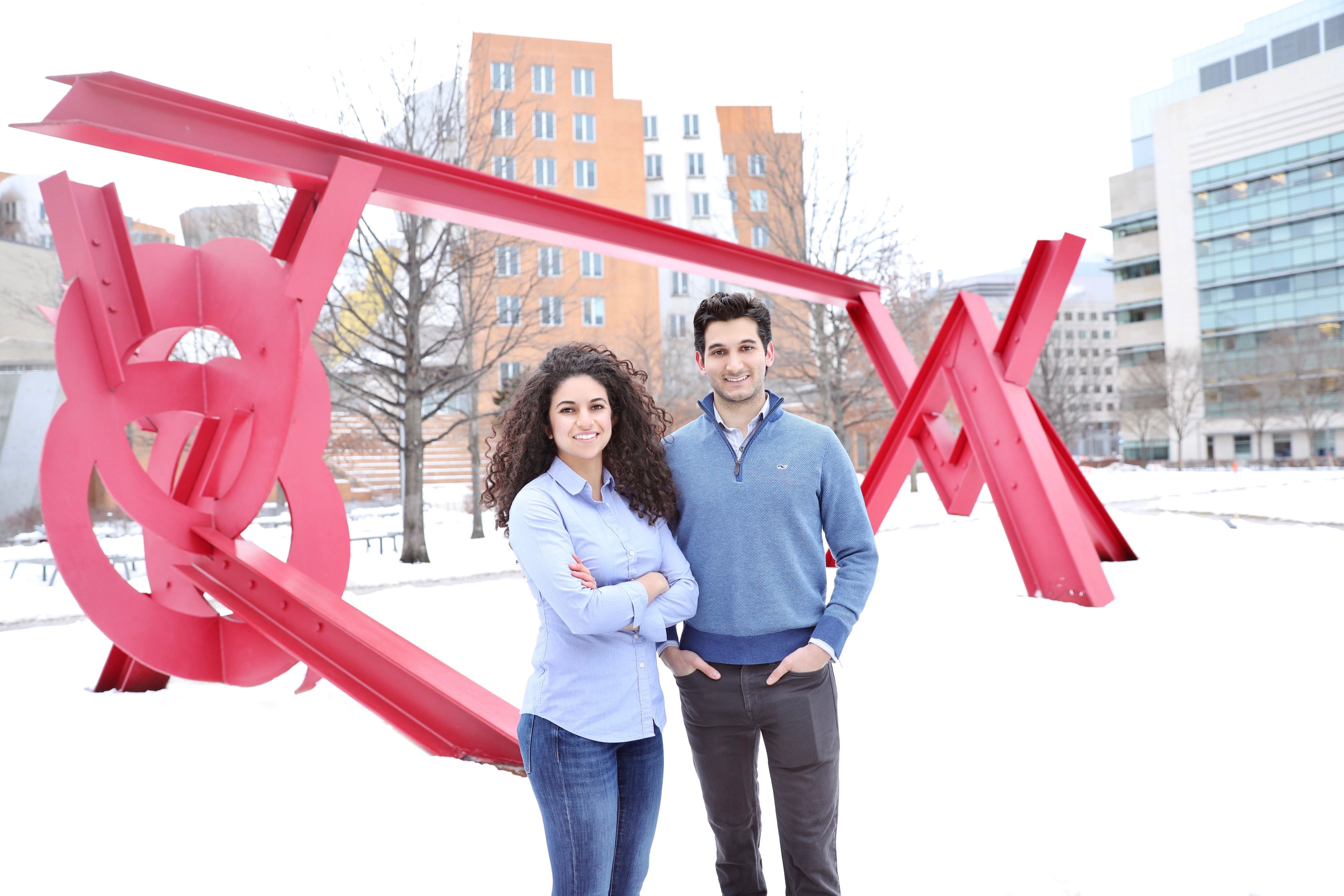The Case for Applying an Entrepreneurial Mindset to Teaching and Remote Learning
I teach high school. But I'm not a teacher. I'm a tech professional who believes in transforming education. This is a story about where high school education might go. The High School Entrepreneur Six years ago I was asked to create an entrepreneurship curriculum for high school juniors and seniors. I had been interested in […]


I teach high school. But I'm not a teacher. I'm a tech professional who believes in transforming education. This is a story about where high school education might go.
The High School Entrepreneur
Six years ago I was asked to create an entrepreneurship curriculum for high school juniors and seniors. I had been interested in the idea of exposing young people to the principles of entrepreneurship for years, I guess for as long as I've been an entrepreneur.
Two years before that, in the summer of 2013, I created a six-week crash course and invited students from local Los Angeles high schools to participate. I convinced 10 amazing kids in grades 9 through 12 to trust me to lead them on an experiment in education. In truth, it was the parents that I had to convince; most of the students were fired up from the get-go.
I had no formal educator training. And truth be told, I was a pretty bad student when I was in high school. But I was passionate about the idea of teaching. I had been an entrepreneur for nearly 20 years and I knew I had knowledge and experience to share. I just didn't know how to do it.
If there's one thing about being an entrepreneur, it's knowing how to figure things out when there is no instruction manual — finding a way to get things done that you know in your heart can be done even when you don't know how. That's the joy of entrepreneurship. And I very much wanted to share that joy with young students.
To understand why I had this motivation, this passion, I need to provide some context, about my own high school experience. I graduated from an elite private school in Los Angeles called Brentwood in 1992. I struggled hard. Not for lack of trying, but because I just didn't learn the way that kids are generally taught.
In hindsight, I realize I was an entrepreneur even back then — when being entrepreneurial meant you were lazy, unfocused, and in many ways, un-smart. I wasn't any of those things, but I sure felt like it. In my mind, I was broken. Everyone around me was getting good grades, planning for college at Stanford, at Columbia, at USC, at NYU, at all these great schools that I knew would never accept me.
I did go to college, to Arizona State University, which turned out to be perfect. But it took me years to appreciate that. The fact that I applied to 12 colleges and got into 1 caused me to feel pretty bad about myself, although I guess it relieved me of the stress so many of my friends endured trying to choose from the multitude of acceptance letters they received.
The point is, high school didn't work for me, scholastically. Now I know that's not because I was dumb or unmotivated. It was because I'm an entrepreneur. I think differently. I learn differently. I don't follow a prescribed path. I find my own way. And back then, high school wasn't designed to work for people like me. Even now, with all the charter schools, special programs, unique teaching methodologies, and all the work administrators have done to make education inclusive and effective for everyone regardless of learning style, education is still in a broken state. There are too many students ending up feeling like I felt — whether they make it to college or not.
This was my inspiration. I wanted to create a class that spoke to the students who thought they weren't smart — a course that awoke and empowered the entrepreneurial spirit that drives so many young people. So I just did it, and my students loved it.
I shared the idea with Brentwood administrators and they helped me recruit a few students that summer. And 18 months later, they asked me to re-create my six-week seminar as a semester-long course and teach it to juniors and seniors in the fall of 2015.
Applying an Entrepreneurial Mindset to Teaching
In six years teaching entrepreneurship at Brentwood, I've asked students to trust me. I've asked them to step out of their comfort zones. And I've taken them down a path that is nearly blind for them. That's part of the philosophy of entrepreneurship. I encouraged them to be curious, to be dogged, to test, and fail, to ask dumb questions, and give wrong answers. I taught them to think differently; to be entrepreneurial. And while the experiences I observed in my students were magical, what inspired me was what I learned. Teaching entrepreneurship has led me to think entrepreneurially about teaching.
To that end, I have come to three important realizations about educating:
- Great Teachers can Come from Anywhere
- Students are Hungry for Practical Courses
- Virtual Learning Works
Great Teachers can Come from Anywhere
As I shared, I'm not a teacher, and I wasn't trained to be a teacher. Truthfully I wasn't trained to be anything. But I've always been good at sharing my own experience with others and distilling complicated topics into bite-sized digestible chunks. Turns out, that's a very effective way to teach young people about entrepreneurship and business. In my experience, many professionals, in business, or any field where they are experts, tend to have these skills.
And I've also found that most people have a desire to give back, to help young people, and to share their experiences with others. These are characteristics of great teachers of course, and I hypothesize that many such professionals would be open and interested in teaching a course in their given area of expertise.
If this turns out to be true, as it was for me, that means there is a huge pool of potentially amazing educators that have never imagined the possibility of being teachers. This alone addresses one of the biggest challenges in education, staffing. The pool of trained and experienced teachers is limited, and contracting. They are typically overworked, under-appreciated, and grossly underpaid.
This creates a gaping hole in our education system. Too many students, not enough teachers. And when it comes to teaching students practical skills like entrepreneurship, design, engineering, marketing, business, sciences, wellness, and so many more topics, why not call upon the experts in these fields to do the work rather than put more load on our most scarce and critical resource of common core educators.
Students are Hungry for Practical Courses
The demand for my entrepreneurship course at Brentwood is overwhelming. We've had to limit acceptance and develop an application process to ensure the most eligible students get access to the class. The most common point of feedback I hear from students is how useful they feel this work is.
However, from the very first day of class, many of my students feel flipped upside down and turned around. They are so accustomed to the educational machine that teaches students to listen to lectures, memorize information, and regurgitate it on tests and essays. Of course, I'm generalizing to be sure — high school education is much more nuanced.
It's no secret that the best students, the students that excel in the business of high school are the ones that work the system the best. I was not that student. I yearned for practical courses that could teach me how to survive post-school life. That's not to say I didn't learn anything in school. Of course, I did. But I wasn't able to connect the dots until way later.
I didn't realize that I was learning how to learn and that it would be up to me to put that knowledge into practice to gain the life and work skills I needed to succeed beyond high school. Teaching young people about entrepreneurship and about a million other topics that can help them survive and thrive in life is more than just a responsible thing to do, it's something that students are beginning to demand.
Virtual Learning Works
In March 2020 the high school education system was thrust into a new paradigm. Teachers and administrators were forced to change everything they had been doing for the last hundred years and learn how to deliver class online. With almost no time to prepare, educators mobilized and began teaching virtually. Some schools did this better than others.
Brentwood had the luxury of money and resources to develop a plan and execute it in short order. They spent their nights and weekends training teachers, creating processes, implementing software, and preparing students for the new world of distance learning.
The public school my 5th-grade children go to fared much worse. They did their best, but their best wasn't nearly sufficient. Students were lost. Teachers were overwhelmed. Systems broke down. And parents were left holding the bag. We had to hire a freelance teacher to work with our kids 3 days a week just to keep them on track as to not fall so far behind this year that they would never make it back.
I suspect a lot of families that could afford it did the same. But for the millions of families that didn't have the financial wherewithal to privately employ a trained educator, the preverbal bag burst wide open filling their lives with stress and anxiety.
This COVID experience has taught us that a) virtual learning can work, and b) virtual learning is not simple. To do it well requires preparation, resources, and a dedicated focus that most schools cannot spare.
The High School Extension
Therein lies the big opportunity. Online learning, both virtually and on-demand, is the platform to deliver practical, useful, and desperately needed courses to a global population of high school students. And staffing these programs can be accomplished by tapping a huge pool of talented and incredibly passionate experts that we adults work with every day.
That's my idea. An online extension program delivered globally by a great school locally. To some extent, this is being done by startups like Udemy, Skillshare, and Udacity. But maybe, the better solution is to do it in conjunction with traditional schools. They bring the students and we bring the courses. And together, we produce stronger, more prepared, and more equipped future professionals.
How and Why it Works
To quote Jim Collins and his Good to Great philosophy, that sure sounds like a BHAG, a big, hairy, audacious goal. So let's break it down into bite-sized chunks. There are many great high schools out there; both private and public. They have honed a curriculum that sets students up to be accepted into great colleges and has equally impressive careers. But sadly these schools are the exception, not the rule. And many of these institutions, particularly the private ones, are inaccessible to a large population of students, in the U.S. and certainly abroad.
I frequently hear private school administrators say they want to reach more kids. They wish they could deliver their educational platform to less fortunate young people that either can't afford or don't live close enough to attend. In their hearts, I believe they mean what they say. But running a great educational institution takes resources and money. This is partly why private school tuition has risen to an average of more than 30 thousand dollars annually in this country. How then can they afford to reach more students?
Virtual Schooling is Cost-Effective
Two of the biggest expenses for traditional high school is facility and insurance. Both of these costs are nearly eliminated in a virtual school environment. Online classroom technology is largely commoditized and universally understood. Schools will need to do work to refactor and optimize classes for online environments and to create a new curriculum, but these are fixed costs that can also be shared between institutions.
The bottom line is running a virtual school, whether with on-demand classes or with live teachers is significantly cheaper than traditional schools.
Expert Teachers are Affordable
Virtual schooling won't make trained educators obsolete. Instead it could create opportunities for teachers to make more money doing less work. The idea is to supplement a traditional teaching staff with on-demand experts that work part-time or perhaps only teach one class per semester.
This model may also give traditional teachers a chance to work from home and explore other interests, both professional and personal. In both cases, virtual teachers are less expensive hour-for-hour but such people can make more per hour than they might otherwise make.
Families Will Pay a Fair Price
Very few families can afford $30/k per year, but many more can afford $5k/year. With tuition in that range, many more students can attend elite educational institutions. Most parents want the best education they can afford and they want to create as many opportunities for their kids as possible. Today those goals are limited for many families. Opening up more curricula, with better teachers and less administration is likely to be something parents and students rush to adopt.
Students are Motivated by Interest
It's no secret that students get excited when they're interested in what they're doing. Most adults can recollect a particular class or teacher growing up that inspired them. But it's also true that most adults remember many more courses that bored them to death. Lack of motivation in school is not due to intelligence or wherewithal, it's almost exclusively driven by interest. And not all students are the same.
This is one of the biggest challenges with organized education. For the public school system to work, many things need to be standardized. The fact that we have a “common core” is in and of itself a significant limiter of opportunity for young people. Students need to be given the freedom to explore their interests. Virtual education can offer students significantly more course selection. More selection means more interest. More interest means more engagement. And that will lead to more successful students going on to do more great things, sooner.
Wrapping Up
So that's my BHAG. I pitched the idea to Brentwood School in Los Angeles this year. But as I've learned, education transforms slowly. Sometimes the best you can do is plant the seed — it takes time to grow. Incidentally, if you're interested, here was my pitch deck. I'd love to build this platform, with Brentwood, or another school, or maybe it's many schools. And I'm not the only one thinking this way. Many people are working to transform high school education.
I hope that sharing this with more people, more frequently, will eventually lead to some innovation and transformation. I hope it sparked something for you too.





































